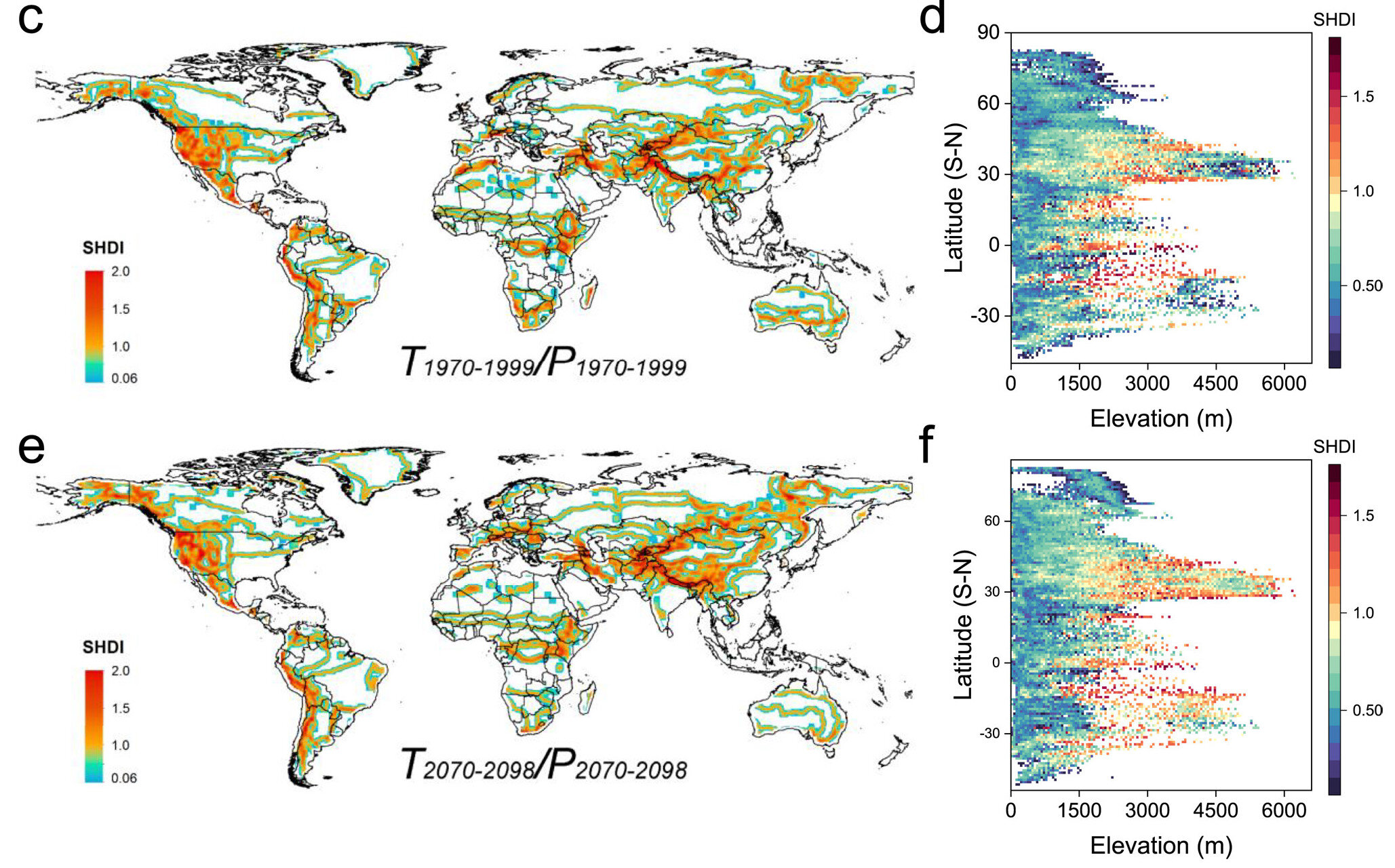
As climate change advances, its impacts are not universally equal, with temperature rising differently by latitude and elevation. Climate heterogeneity is the study of this diversity in Earth’s climate patterns, and the focus of recent research published in Geophysical Research Letters.
Yanlong Guan, of Fujian Agriculture and Forestry University, China, and colleagues investigated the role elevation plays in climate heterogeneity by analyzing changes in organismal diversity via Shannon’s diversity index and the Köppen‐Geiger climate classification. The latter divides climate into tropical, arid, temperate, continental and polar regions based upon seasonal precipitation and temperature links to vegetation distribution.
Such temperature and precipitation data was derived from more than 4,000 weather stations globally across a 70-year period, beginning in 1952. Topography adds further complexity to this as surface roughness and elevation can impact surface temperature, precipitation, the hydrological cycle, energy budgets and vegetation cover that can create a patchwork of the five climate groups. This project investigated nine elevations from 0 m to more than 4,000 m at 500 m intervals.
The research team’s key finding is that Shannon’s diversity index reduces at low elevations (less than 2,000 m) where temperatures rise higher and faster, leading to proliferation of similar arid and tropical conditions over a wide expanse of area.
In comparison, higher elevations (more than 2,000 m) display greater climate heterogeneity, meaning that the diversity index continues to increase amidst the initially cooler but continuously slow warming environmental conditions until only small patches of cold climates remain at topographic highs.
Additionally, the scientists used climate simulations to test what was forcing these patterns, unsurprisingly determining anthropogenic climate change as the driver of this distinct shift in climate heterogeneity between lower and higher altitudes.
These simulations also extrapolated climate heterogeneity through the reminder of the century, identifying locations that may experience reduced climate variability, such as North America which is at an average elevation of ~1600 m and predicted to experience a mean temperature of 14.2°C.
Meanwhile, high elevation colder refugia identified include the Qinghai-Tibet Plateau at more than 4,100 m, which is predicted to experience temperatures of 5.9°C during 2070–2098, but is already warming at an enhanced rate of 0.44°C per decade, twice the global average.
This research is significant as projections suggest up to 46% of land surfaces may transition to warmer and drier conditions by the end of the century, with this homogenization of climate types potentially threatening habitat and species distributions.
Therefore, understanding the climate variability that persists at higher elevations could mean that they become refugia for human, animal and plant communities in years to come as they seek more favorable conditions away from rising temperatures and the wealth of social, economic and environmental issues that ensue.
More information:
Yanlong Guan et al, Elevation Regulates the Response of Climate Heterogeneity to Climate Change, Geophysical Research Letters (2024). DOI: 10.1029/2024GL109483
© 2024 Science X Network
Citation:
High elevation regions may become wildlife refuges through climate change (2024, July 9)
retrieved 9 July 2024
from https://phys.org/news/2024-07-high-elevation-regions-wildlife-refuges.html
This document is subject to copyright. Apart from any fair dealing for the purpose of private study or research, no
part may be reproduced without the written permission. The content is provided for information purposes only.







